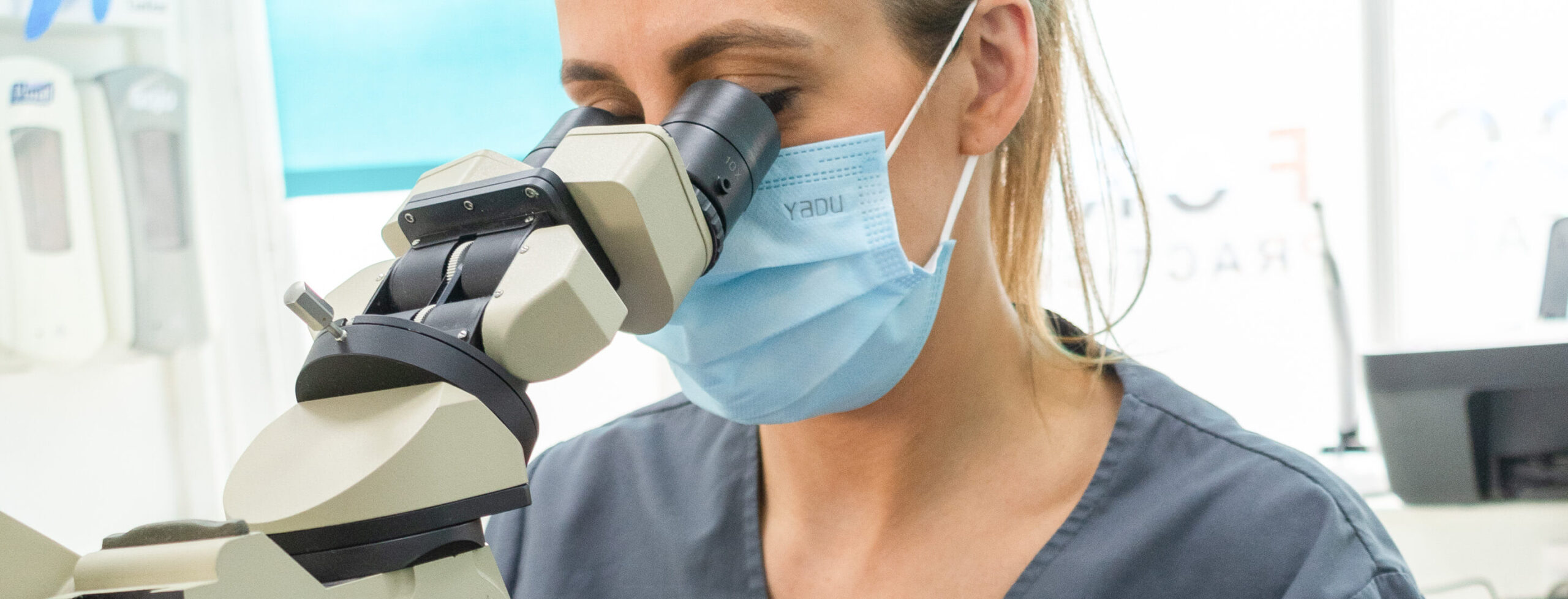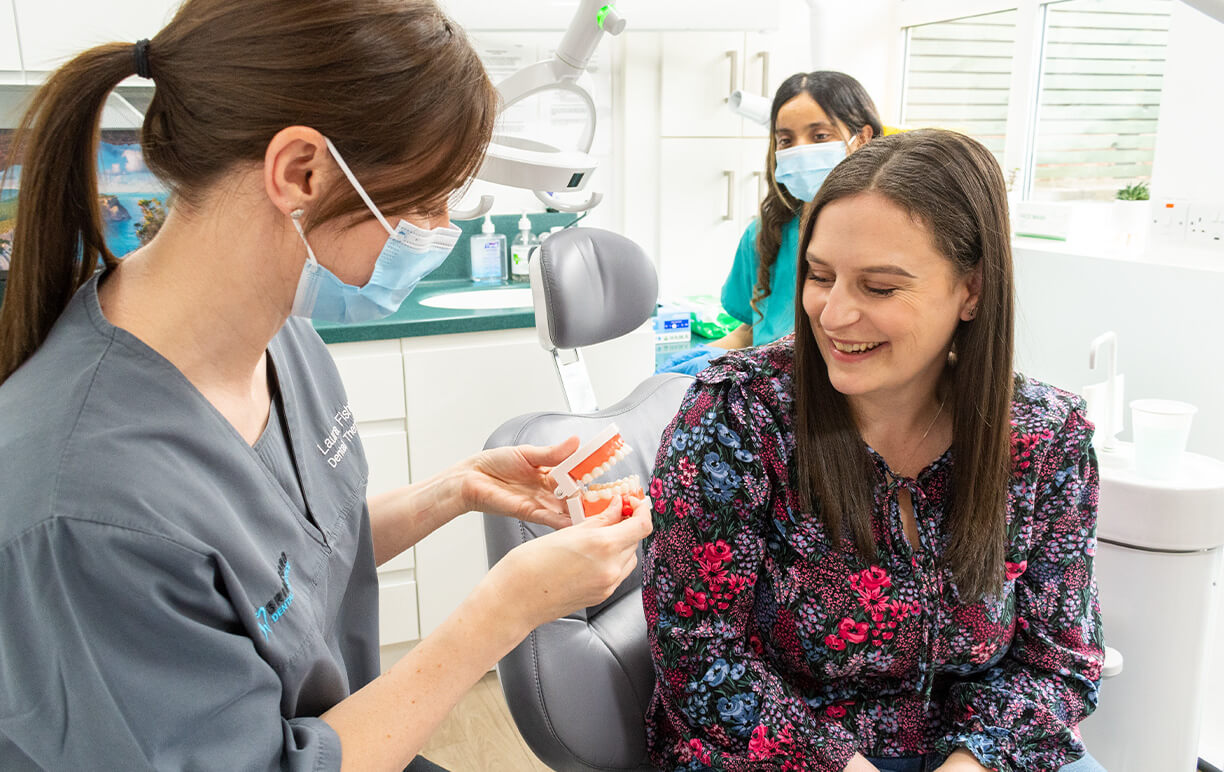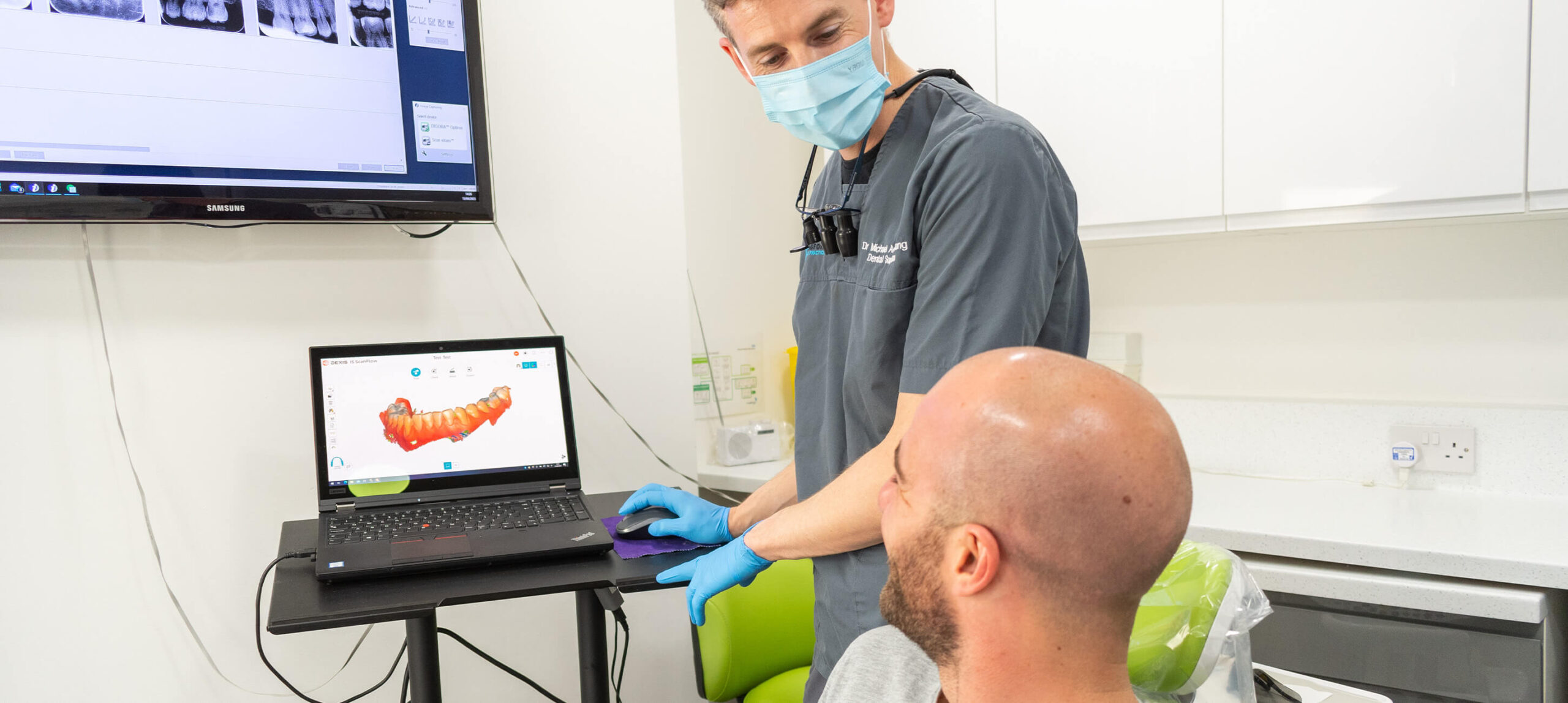Firstly your dentist will give you a local anaesthetic to make you comfortable and then isolate the tooth using a very thin piece of rubber. This helps prevent you from swallowing any small files or fluid through the procedure. It also helps contain the infection and keep the tooth dry from saliva. Through making an incision in the top of the tooth, the pulp can be removed and the canal(s) cleaned out using small files. After thorough cleaning, the canal(s) are filled and then the tooth is restored.
It is not uncommon to require a second visit to complete root canal treatment, especially where a tooth is severely damaged. Where a second visit is required, your dentist will use a temporary filling to seal the tooth to prevent any debris, or bacteria, from re-entering.
Most people report that the discomfort level of the procedure is similar to having a filling carried out. Your dentist will always try and keep you as comfortable as possible throughout. Following the procedure you may experience some discomfort for a few days. Your regular over the counter painkillers can be taken to help relieve this (always read the leaflet and follow dosage instructions). If your symptoms persist or get worse you are advised to contact your practice.
We’ll give you through aftercare guidance on how to look after the treated area immediately afterwards. However, moving forwards, it will be most important to maintain good oral hygiene. Any root treated tooth should be cleaned in the same way as the rest of your teeth.














